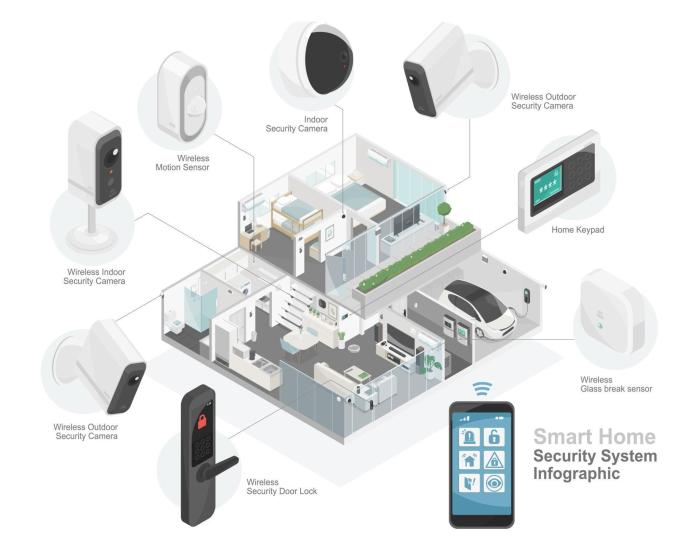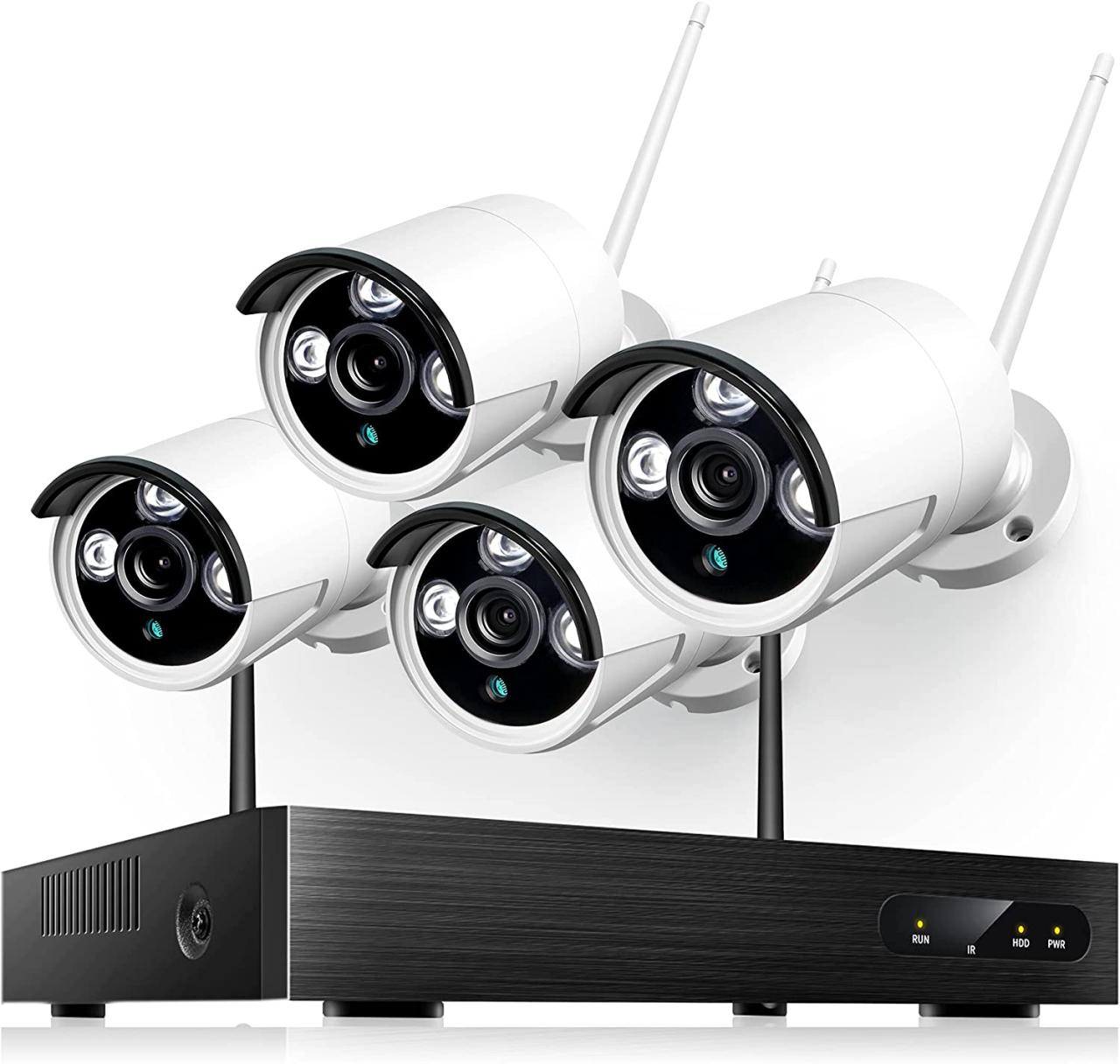Smart Home Security Systems That Work Without Wi-Fi: Enhancing Security Beyond Connectivity
When it comes to safeguarding your home, having security systems that don't rely on Wi-Fi can offer a reliable solution in areas with spotty connectivity. Discover the key features and benefits of smart home security systems that operate independently of Wi-Fi.
Smart Home Security Systems That Work Without Wi-Fi
Having security systems that function without Wi-Fi is crucial for ensuring the safety and protection of your home, especially in areas with unreliable or no Wi-Fi connectivity. These systems provide a reliable alternative for homeowners who may not have access to a stable internet connection.
Key Features of Smart Home Security Systems
- Local Storage: Smart home security systems that operate without Wi-Fi often come equipped with local storage options, such as SD cards or hard drives, to store footage and data.
- Cellular Connectivity: These systems can connect to cellular networks, allowing them to send alerts and notifications even when Wi-Fi is not available.
- Battery Backup: To ensure continuous operation, smart home security systems without Wi-Fi typically include battery backup in case of power outages.
- Self-Monitoring: Some systems offer self-monitoring features, allowing homeowners to receive alerts directly on their smartphones, independent of Wi-Fi.
Security in Areas with Unreliable Wi-Fi
In areas with unreliable Wi-Fi connectivity, smart home security systems that work without Wi-Fi provide a reliable security solution. These systems can function seamlessly even when internet connectivity is limited, ensuring that your home remains protected at all times.
Types of Non-Wi-Fi Smart Home Security Systems
When it comes to smart home security systems that do not rely on Wi-Fi, there are various types available to choose from. One popular option is cellular-based security systems, which operate using cellular networks instead of Wi-Fi. These systems offer a reliable alternative for homeowners looking to secure their properties without depending on a Wi-Fi connection.
Cellular-Based Security Systems vs. Traditional Wi-Fi-Dependent Systems
Cellular-based security systems differ from traditional Wi-Fi-dependent systems in how they communicate and transmit data. While Wi-Fi systems rely on internet connectivity to function, cellular-based systems use cellular networks, making them more reliable in case of internet outages or disruptions.
- Cellular-based systems do not require a Wi-Fi connection to operate, ensuring continuous security monitoring even when the Wi-Fi is down.
- Traditional Wi-Fi-dependent systems may experience connectivity issues during internet outages, potentially leaving your home vulnerable.
- Cellular-based systems are often more secure as they are not susceptible to common Wi-Fi hacking techniques.
Examples of Non-Wi-Fi Security Systems
Some examples of security systems that utilize cellular networks or other non-Wi-Fi technologies include:
- SimpliSafe:This home security system uses cellular monitoring to ensure uninterrupted protection for your home.
- Abode:Another option that offers cellular backup in case of Wi-Fi disruptions, providing added peace of mind.
- Ring Alarm:Utilizes Z-Wave technology for communication between devices, allowing for a reliable non-Wi-Fi connection.
Advantages and Disadvantages of Different Non-Wi-Fi Smart Home Security Systems
When considering non-Wi-Fi smart home security systems, it's essential to weigh the pros and cons of each type:
| Advantages | Disadvantages |
|---|---|
|
|
|
|
Installation and Setup of Wi-Fi-Free Security Systems

When it comes to setting up a smart home security system that doesn't rely on Wi-Fi, there are specific steps and considerations to keep in mind to ensure a smooth installation process.To begin with, make sure you have all the necessary equipment ready before starting the installation.
Some of the key components you will need include:
- Non-Wi-Fi cameras or sensors
- Control panel or hub that operates independently from Wi-Fi
- Power source or batteries for each device
- Mounting hardware for cameras or sensors
- Connecting cables or wires for system integration
Step-by-Step Installation Guide
- Choose strategic locations for your cameras or sensors to cover essential areas of your home.
- Mount the devices securely using the provided hardware to ensure stability and proper positioning.
- Connect each device to the control panel or hub according to the manufacturer's instructions.
- Power up the system and make sure all components are functioning correctly.
- Adjust the settings on the control panel to customize the security system based on your preferences.
Tips for Optimizing Performance
- Ensure that the control panel or hub is placed in a central location for optimal signal transmission to all devices.
- Regularly check and replace batteries in the cameras or sensors to maintain consistent performance.
- Secure all connecting cables and wires to prevent accidental disconnection or damage.
- Test the system regularly to identify any potential issues and address them promptly.
- Consider adding additional devices or expanding the system to enhance security coverage as needed.
Remote Monitoring and Control Without Wi-Fi

In a non-Wi-Fi smart home security system, users can still remotely monitor and control their security setup through alternative means. While traditional Wi-Fi connectivity may not be available, there are tools and platforms that enable access to security system alerts and feeds without the need for Wi-Fi.
Tools and Platforms for Remote Monitoring
- Cellular Networks: Non-Wi-Fi security systems can utilize cellular networks to send alerts and updates to users' smartphones or devices. This allows for real-time monitoring and control even when Wi-Fi is not available.
- Landline Connection: Some security systems can connect to a landline for communication purposes. Users can receive alerts and access their security system remotely through the landline connection.
Functionality and Limitations of Remote Monitoring Features
- Real-Time Alerts: Non-Wi-Fi security systems can still provide real-time alerts to users in case of any security breaches or suspicious activities detected. Users can receive notifications on their smartphones or other connected devices.
- Remote Arm/Disarm: Users can remotely arm or disarm their security system even without Wi-Fi connectivity. This feature allows for convenient control over the system from anywhere.
- Video Feeds: Some non-Wi-Fi security systems offer the capability to access live video feeds of the monitored areas. Users can check the video footage remotely to ensure everything is secure.
- Limitations: While remote monitoring and control are possible without Wi-Fi, the range and reliability of the connection may vary depending on the alternative communication method used. Users may experience delays in receiving alerts or controlling the system in some cases.
Final Conclusion
As we conclude our exploration of smart home security systems that work without Wi-Fi, it becomes evident that reliable security can be achieved even without a constant internet connection. With advanced technology and innovative solutions, ensuring the safety of your home is now more accessible than ever.
FAQ
Can I monitor my non-Wi-Fi security system remotely?
Yes, many non-Wi-Fi security systems offer remote monitoring through cellular networks or other technologies, allowing you to keep an eye on your home even without Wi-Fi.
Are non-Wi-Fi security systems as reliable as Wi-Fi-dependent ones?
Non-Wi-Fi security systems can be equally reliable, especially in areas with poor connectivity. They provide a dependable alternative for ensuring the safety of your home.
What equipment is needed for installing a non-Wi-Fi security system?
Typically, non-Wi-Fi security systems require cameras, sensors, a control panel, and a cellular communicator for remote connectivity.




